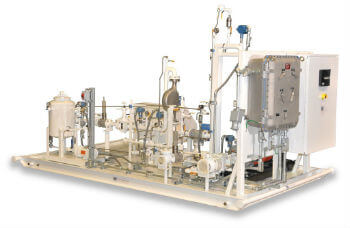Midstream Oil and Gas, Uncategorized
Key Components of a LACT Unit and Their Functions
November 18, 2024 Welcome
In the oil and gas industry, the accurate measurement and transfer of hydrocarbons is a critical process. One of the most reliable and efficient systems used for this purpose is the Lease Automatic Custody Transfer (LACT) unit. These units play a crucial role in ensuring the precise measurement and transfer of oil from the production site to the transportation or storage facility, thereby ensuring that all parties involved receive the correct amount of product.
In this guide, we’ll break down the key components of a LACT unit and explore their functions.
1. The Flow Meter
At the heart of every LACT unit is the flow meter. This device measures the volume of liquid passing through the unit with high accuracy. The flow meter’s primary function is to provide precise and continuous measurement of the oil as it moves through the pipeline.
Different types of flow meters, such as turbine meters or positive displacement meters, are used depending on the specific requirements of the operation. The accuracy of the flow meter is vital for ensuring that the correct volume of oil is transferred, preventing disputes between buyers and sellers.
2. The Sampling System
The sampling system in a LACT unit is responsible for collecting representative samples of the oil as it flows through the unit. These samples are critical for determining the quality of the oil, including its density, water content, and other characteristics. The sampling system ensures that the samples taken are accurate and representative of the entire batch of oil being transferred. This data is essential for both the buyer and the seller to verify that the oil meets contractual specifications.
3. The Prover
The prover is a calibration device used to verify the accuracy of the flow meter. It functions by comparing the flow meter’s readings with a known volume of liquid in the prover. This process helps to ensure that the flow meter is operating correctly and providing accurate measurements.
Regular calibration using the prover is essential for maintaining the integrity of the custody transfer process, as even slight inaccuracies in measurement can lead to significant financial discrepancies.
4. The Control Valves
Control valves regulate the flow of oil through the LACT unit. These valves open and close automatically to control the rate of flow and ensure that the oil is transferred at the correct pressure. The control valves play a crucial role in maintaining a steady and controlled flow of oil, which is necessary for accurate measurement and sampling. In addition, they help to prevent damage to the equipment by controlling surges or drops in pressure.
5. The Strainer
Before the oil enters the flow meter, it passes through a strainer. The strainer is designed to remove any debris, sand, or other solid particles from the oil. This is an important step because such contaminants can cause damage to the flow meter and other components of the LACT unit. By removing these impurities, the strainer helps to ensure the longevity and accuracy of the equipment.
6. The Air Eliminator
The air eliminator is a critical component that removes any entrained air or gas from the oil before it reaches the flow meter. Air or gas in the oil can lead to inaccurate measurements, as the flow meter would register both the oil and the air as part of the liquid volume. By removing these unwanted gases, the air eliminator ensures that the flow meter only measures the actual volume of oil, thereby improving the accuracy of the custody transfer process.
7. The Back Pressure Valve
The back pressure valve maintains a constant pressure within the LACT unit, which is essential for accurate measurement and smooth operation. It ensures that the oil flows through the unit at the required pressure, preventing fluctuations that could affect the accuracy of the flow meter. The back pressure valve also helps to protect the equipment from potential damage caused by sudden pressure changes.
8. The Automation and Control System
Modern LACT skids are equipped with advanced automation and control systems that monitor and manage the entire custody transfer process. These systems collect data from the flow meter, sampling system, and other components, and provide real-time monitoring of the transfer process.
The automation system can also generate reports, alarms, and notifications to alert operators of any issues or discrepancies. This technology enhances the efficiency and reliability of the LACT unit, reducing the risk of errors and ensuring compliance with industry standards.
Discover LACT Unit Solutions from IFS/DXP Today
Understanding the functions of these components is essential for anyone involved in oil and gas operations.
If you’re in need of a reliable and efficient LACT skid or have any questions about its operation, IFS/DXP offers state-of-the-art solutions tailored to your specific needs. Our team of experts can help you select the right equipment and ensure that your operations run smoothly and efficiently.
Contact us today to learn more about our oil and gas processing solutions!

